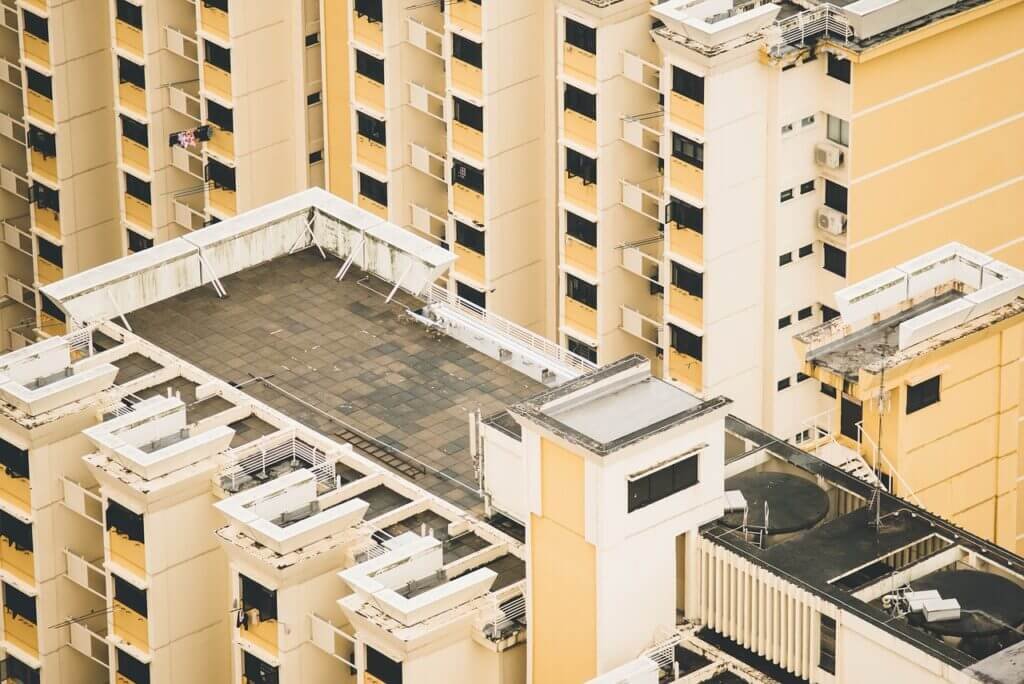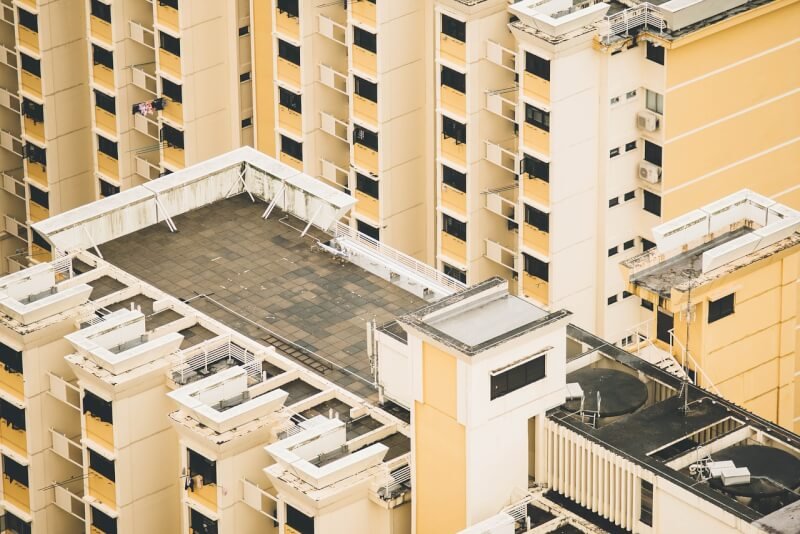Are you interested in creating your own rooftop garden in the bustling city? If so, there are several important factors to consider before plunging into this green endeavor. From selecting the right plants, to proper irrigation systems, to ensuring structural integrity, this article explores the considerations you need to keep in mind when embarking on your rooftop gardening adventure. So, let’s explore the world of urban rooftop gardening and discover how to bring nature to new heights!

Building Structure
Structural Capacity
When considering rooftop gardening in the city, one of the most important factors to take into account is the structural capacity of the building. You need to determine whether the roof can support the weight of the garden, including the containers, soil, and plants. Consult with a structural engineer or building professional to assess the load-bearing capacity of the roof. It’s crucial to ensure that the structure can withstand the added weight without compromising its integrity.
Accessibility
Another consideration for rooftop gardening is accessibility. You should evaluate how easily you can access the rooftop space for gardening activities. Ensure that there is a safe and convenient way to reach the garden, such as a staircase or elevator. This will make it easier for you to transport materials, plants, and equipment to and from the rooftop. Additionally, consider the ease of maintaining the garden and if it will require any special equipment or tools for upkeep.
Building Permits
Before starting a rooftop garden, it’s important to check with local authorities and obtain any necessary building permits. Some cities may have specific regulations or restrictions regarding rooftop gardens, particularly in terms of safety and structural requirements. Consult with the building department or local authorities to understand and comply with any permit requirements. This will help ensure that your rooftop garden is legal and meets all necessary safety standards.
Climate and Environment
Sunlight Exposure
Sunlight exposure is a critical consideration when planning a rooftop garden. Assess the amount of sunlight your rooftop receives throughout the day and identify any potential shade or obstructions that may affect plant growth. Some plants require full sun, while others thrive in partial shade. Understanding the sunlight patterns on your rooftop will help you determine which plants are suitable for your garden.
Wind and Microclimates
Rooftop gardens are often exposed to strong winds, which can impact plant growth and survival. Consider the wind patterns in your area and select plants that can withstand these conditions. Additionally, microclimates may exist on the rooftop, influenced by factors such as nearby buildings or trees. These microclimates can create variations in temperature, wind, and moisture levels. Understanding these microclimates will help you choose plants that are well-suited to the specific conditions of your rooftop garden.
Temperature and Heat
Urban environments can generate higher temperatures, commonly known as the urban heat island effect. Rooftop gardens can mitigate these temperatures by providing shade and reducing heat absorption from the sun. However, it’s crucial to select plants that can tolerate these higher temperatures. Consider both the average and extreme temperature ranges in your area to ensure your plants can thrive in the rooftop garden’s environment.
Rainwater and Drainage
Proper drainage is essential for a successful rooftop garden. Examine the drainage system on your rooftop and ensure that excess water can be efficiently removed. Improper drainage can lead to water pooling and damage the roof structure. Additionally, consider how rainwater runoff will be managed. Implementing a rainwater harvesting system, such as installing rain barrels or using permeable surfaces, can help conserve water and mitigate the impact on the surrounding environment.

Safety
Fence and Guardrails
Safety should be a top priority when designing a rooftop garden. Establish a sturdy fence or guardrail system around the perimeter of the rooftop to prevent accidental falls. The height and strength of the fence or guardrails should comply with local safety regulations. This will help create a secure environment for gardening activities and provide peace of mind for both gardeners and visitors.
Fire Safety
Fire safety is crucial when it comes to rooftop gardening. Ensure that your garden is equipped with adequate fire safety measures. This may include having fire extinguishers accessible, installing fire-resistant materials, and implementing fire suppression systems if required. Additionally, be mindful of any potential fire hazards in your garden, such as flammable materials or inadequate electrical installations. Regularly inspect and maintain your garden to minimize fire risks.
Pesticides and Chemicals
When choosing pest control methods for your rooftop garden, opt for organic and environmentally friendly options. Avoid using pesticides or chemicals that may harm beneficial insects, animals, or the local ecosystem. Integrated pest management techniques, such as companion planting and natural predators, can help control pests without relying on harmful chemicals. Prioritize the health and safety of both your rooftop garden and the surrounding environment.
Irrigation System Safety
Safety considerations extend to the irrigation system used in the rooftop garden. Ensure that the irrigation system is installed properly and adheres to all safety standards. Regularly inspect the system for leaks, blockages, or any other potential hazards. Additionally, be cautious of electrical components within the irrigation system. Avoid running electrical wires or systems through wet areas to minimize the risk of electrical shock or damage.
Weight and Load Bearing
Soil Type and Moisture
The weight of the soil is an important factor to consider when planning a rooftop garden. Choose lightweight, well-draining soil that won’t significantly add to the load-bearing requirements of your rooftop. Additionally, consider the moisture retention properties of the soil to ensure that excess water can drain away efficiently. Using soil mixes specifically designed for rooftop gardens can provide an optimal balance of weight and moisture management.
Container Size and Material
Selecting appropriate containers for your rooftop garden is crucial to ensure structural stability and plant health. Consider the size and weight of the containers, as larger containers will significantly increase the load on the rooftop. Additionally, choose containers made of lightweight materials, such as plastic or fiberglass, that are less likely to add excessive weight. Choosing containers with proper drainage holes is essential for preventing water buildup and potential damage to the rooftop.
Plant Selection
The selection of plants in your rooftop garden plays a significant role in determining the weight and load requirements. Opt for lightweight plant varieties that have shallow root systems and don’t require a deep soil profile. Succulents, ornamental grasses, and herbs are often suitable choices for rooftop gardens due to their lower weight and water requirements. Consider the mature size and growth habits of plants to ensure they will not outgrow the available space or cause instability.

Watering and Irrigation
Water Source
Consider the water source for your rooftop garden. Ensure that you have access to an adequate and sustainable water supply. Depending on your location and water availability, you may need to rely on a municipal water supply, rainwater harvesting, or a combination of both. Implementing water-efficient practices, such as drip irrigation or using soaker hoses, can help minimize water usage and promote sustainable gardening.
Irrigation System
Choosing the right irrigation system is essential for maintaining a healthy rooftop garden. Drip irrigation systems are often preferred for rooftop gardens as they deliver water directly to the plant roots, minimizing water waste and evaporation. Automated irrigation systems with timers can also help ensure consistent watering, especially during periods of increased heat or drought. Regularly monitor and adjust the irrigation system to ensure optimal water distribution for your rooftop garden.
Rainwater Harvesting
Rooftop gardens present an excellent opportunity for rainwater harvesting. Capturing and utilizing rainwater can help reduce water usage and reliance on other water sources. Install rain barrels or cisterns to collect rainwater from your rooftop. Ensure that the collected rainwater is properly filtered and stored to prevent stagnation or contamination. Consider strategically placing these rainwater collection systems to maximize efficiency and minimize interference with the overall garden design.
Water Conservation
Water conservation should be a priority in rooftop gardening. Implementing water-saving techniques, such as mulching, can help retain moisture in the soil and reduce the frequency of watering. Selecting drought-tolerant plant varieties can also help reduce water requirements. Additionally, regularly monitor soil moisture levels and adjust watering schedules accordingly to avoid overwatering. By conserving water in your rooftop garden, you can make a positive impact on the environment and help mitigate the strain on local water resources.
Plant Selection and Maintenance
Native and Adapted Plants
Choosing native and adapted plants for your rooftop garden is beneficial for various reasons. Native plants are well-suited to the local climate, requiring less water and maintenance. They also provide essential habitat and food sources for local wildlife. Additionally, adapted plants, whether native or non-native, have been cultivated to thrive in specific conditions, such as rooftop gardens. Prioritize plants that are hardy, resilient, and able to withstand the challenges of an urban rooftop environment.
Growth Habits and Spread
Consider the growth habits and spread of the plants you choose for your rooftop garden. Some plants, such as vines or plants with aggressive root systems, may damage the building structure or create maintenance challenges. Ensure that the selected plants will not encroach on neighboring properties or obstruct essential rooftop features. Regular pruning and monitoring of plant growth will help maintain a visually appealing and well-controlled garden.
Pest and Disease Management
Pest and disease management is crucial for maintaining a healthy rooftop garden. Implement integrated pest management techniques to minimize the need for chemical pesticides. Monitor plants regularly for signs of pests or diseases and take appropriate action, such as manual removal or applying organic pest control methods. By employing proactive measures and promptly addressing any issues, you can prevent the spread of pests and diseases and maintain the overall health of your rooftop garden.
Maintenance and Upkeep
Regular maintenance is necessary to ensure the longevity and beauty of your rooftop garden. Tasks such as weeding, pruning, fertilizing, and general cleanup should be performed regularly to keep the garden in optimum condition. Develop a maintenance schedule and allocate time for these tasks. Additionally, consider the long-term upkeep costs when designing your rooftop garden. Investing time and effort into proper maintenance will reward you with vibrant, flourishing plants and a visually appealing rooftop oasis.
Community Considerations
Neighborhood Regulations
Before starting a rooftop garden, familiarize yourself with any neighborhood regulations or restrictions that may affect your plans. Some neighborhoods or homeowners’ associations may have guidelines regarding rooftop gardens, such as restrictions on the height, type, or visibility of gardens. Ensure that your project complies with these regulations to prevent any disputes or legal issues. Engaging with your community and obtaining support or feedback can also foster positive relationships and create a more harmonious gardening experience.
Community Involvement
A rooftop garden can provide an excellent opportunity for community involvement. Consider engaging your neighbors, friends, or local community organizations in the gardening process. This can create a sense of camaraderie, foster connections, and enhance the overall neighborhood experience. Organize gardening workshops, plant exchanges, or community events to encourage participation and shared responsibility for the rooftop garden. Together, you can create a thriving green space that benefits the entire community.
Aesthetics and Visual Impact
Rooftop gardens not only provide environmental benefits but also contribute to the visual appeal of the surrounding area. Consider the aesthetics and visual impact of your garden design. Choose plants and design elements that complement the building’s architecture and the overall neighborhood aesthetic. Create a harmonious and visually pleasing rooftop garden that enhances the beauty of the surrounding environment and brings joy to both residents and passersby.
Noise and Odor
Take into account any potential noise or odor that may arise from your rooftop garden. If you plan to grow certain plants known for their fragrance or attract pollinators, be mindful of the impact on neighboring properties. Consider the proximity of residential areas and select plants that won’t emit strong odors that could be bothersome to others. Similarly, avoid gardening practices that generate excessive noise, such as using noisy machinery or gardening tools during inappropriate hours. Maintaining a considerate approach to noise and odor will help foster positive relationships within the community.
Environmental Impact
Greenhouse Gas Emissions
Rooftop gardens can contribute to reducing greenhouse gas emissions by mitigating the urban heat island effect and improving air quality. Through photosynthesis, plants absorb carbon dioxide and release oxygen, helping to counterbalance greenhouse gas emissions. Additionally, rooftop gardens can act as insulators, reducing the need for excessive cooling or heating in buildings. By implementing rooftop gardening practices, you contribute to minimizing your carbon footprint and combatting climate change.
Urban Heat Island Effect
The urban heat island effect refers to the phenomenon where urban areas experience higher temperatures compared to surrounding rural areas. Rooftop gardens can help combat this effect by providing shade, reducing heat absorption, and promoting evaporative cooling. The plants and vegetation on rooftops absorb heat and release moisture through transpiration, aiding in cooling the surrounding environment. By implementing rooftop gardens, you contribute to creating a more comfortable and sustainable urban landscape.
Air Quality
Rooftop gardens play a significant role in improving urban air quality. Plants naturally filter pollutants from the air, including particulate matter and harmful gases. By introducing vegetation to rooftops, you help reduce air pollution and create a healthier environment for both humans and wildlife. Additionally, rooftop gardens can act as sound barriers, helping to muffle noise pollution and create a quieter, more peaceful living space.
Biodiversity
Rooftop gardens provide opportunities for urban biodiversity and habitat creation. Selecting a variety of plants and incorporating native species attracts pollinators, birds, and other wildlife to the area. This promotes biodiversity and helps support the local ecosystem. Additionally, rooftop gardens can serve as stepping stones or green corridors, connecting fragmented habitats and enhancing ecological resilience in urban areas. By embracing rooftop gardening, you contribute to preserving and restoring biodiversity in the city.
Costs and Budget
Initial Setup Costs
When planning a rooftop garden, consider the initial setup costs. These may include containers, soil, plants, and any necessary garden structures, such as fences or guardrails. Research and budget for these costs accordingly. It’s recommended to consult with a professional or seek advice from experienced rooftop gardeners to determine the most cost-effective solutions. While the initial investment may vary depending on the size and complexity of the garden, remember that rooftop gardens offer long-term rewards and benefits that can outweigh the upfront expenses.
Maintenance Expenses
Maintenance expenses should also be factored into your rooftop garden budget. Regular maintenance tasks, such as watering, fertilizing, and pest control, require ongoing time and resources. Additionally, periodic inspections and repairs may be necessary to ensure the safety and structural integrity of the rooftop garden. Consider the long-term financial commitment required to maintain your garden and allocate appropriate resources to ensure its continued success.
Return on Investment
Although rooftop gardens require an initial investment and ongoing maintenance, they can yield multiple returns on investment. Apart from the environmental benefits, rooftop gardens can increase property value and enhance the marketability of buildings. Properties with rooftop gardens are often more desirable to potential buyers and tenants. Additionally, the energy-saving benefits of rooftop gardens can reduce utility costs over time. By investing in a rooftop garden, you not only enjoy the immediate rewards but also potentially improve the long-term value of your property.
Benefits and Rewards
Urban Food Production
One of the significant benefits of rooftop gardening is urban food production. Growing your own fruits, vegetables, and herbs on your rooftop allows you to have a direct source of fresh, organic produce. Rooftop gardens provide a solution for those living in urban areas with limited access to traditional gardening space. By producing your own food, you contribute to food security, reduce reliance on commercial agriculture, and promote sustainable living.
Improved Air Quality
As discussed earlier, rooftop gardens contribute to improved air quality in urban areas. Plants act as natural air filters, removing pollutants and releasing oxygen into the atmosphere. By creating a rooftop garden, you actively contribute to reducing air pollution, creating a healthier living environment for yourself and those around you. Breathing cleaner air has numerous health benefits, including reducing the risk of respiratory diseases and improving overall well-being.
Reduced Energy Consumption
Rooftop gardens can help reduce energy consumption in buildings. By providing insulation and shade, the plants on rooftops help regulate indoor temperatures, reducing the need for excessive cooling or heating. This can lead to significant energy savings and lower utility bills. Additionally, the cooling effect of rooftop gardens can alleviate the urban heat island effect, reducing the overall energy demand in urban environments. By incorporating a rooftop garden, you contribute to energy efficiency and sustainable building practices.
Enhanced Community Connection
Rooftop gardens have the potential to foster community connections and enhance social interaction. By involving neighbors and the local community in gardening activities, you create a sense of shared responsibility and purpose. Rooftop gardens can be a gathering space for community events, workshops, or simply a place for people to relax and connect with nature. Through rooftop gardening, you can strengthen the bonds within your community and create a vibrant, inclusive neighborhood.
In conclusion, rooftop gardening in the city requires careful consideration of various factors. From assessing the structural capacity of the building and ensuring accessibility to understanding climate conditions and addressing safety concerns, every aspect contributes to the success of a rooftop garden. The weight and load-bearing capacity of the rooftop, as well as the selection of suitable plants, must be evaluated to maintain stability and promote healthy growth. Watering, irrigation, and maintenance practices should prioritize conservation and sustainability. Consideration of community regulations, aesthetics, and environmental impact is vital for creating a rooftop garden that positively contributes to the urban environment. With proper planning, investment, and ongoing care, the benefits and rewards of rooftop gardening, including urban food production, improved air quality, energy efficiency, and community connection, can be enjoyed by both gardeners and the community as a whole.


